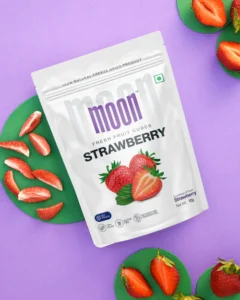Can Waffle Mix Deliver the Ideal Texture and Flavor Every Time?
In professional kitchens, consistency is a hallmark of quality. Achieving the perfect balance of texture and flavor in waffles requires...

In professional kitchens, consistency is a hallmark of quality. Achieving the perfect balance of texture and flavor in waffles requires more than culinary skill; it demands precise formulation and reliable ingredients. One component that plays a pivotal role in this process is Waffle Mix. Far from being a convenience product, a well-formulated mix is designed to produce consistent results, allowing chefs to deliver waffles with uniform crispiness, tender interiors, and balanced sweetness every time.
This article explores how waffle mix contributes to predictable texture and flavor, the science behind its formulation, and why it has become indispensable in professional culinary operations.
Understanding the Role of Waffle Mix
Waffle mix is not simply flour combined with sugar and leavening agents. It is a carefully calibrated blend where each ingredient has a distinct function:
- Flour: Provides structure and influences chewiness. Protein content determines gluten development, affecting elasticity and gas retention.
- Leavening agents: Baking powder or soda create consistent lift, ensuring airy interiors.
- Sugar: Adds sweetness, enhances browning through the Maillard reaction, and retains moisture for a tender crumb.
- Fats or oils: Contribute to crispness on the outside while maintaining softness inside.
- Emulsifiers or stabilizers: Improve batter uniformity, prevent separation, and support handling in busy kitchens.
The precise balance of these ingredients ensures that each batch of batter behaves predictably, producing waffles with the desired texture and flavor profile without requiring complex adjustments.
Achieving Consistent Texture
Texture is one of the most critical elements that distinguishes professional-quality waffles. The goal is a crisp exterior paired with a soft, airy interior, a combination that requires careful balance in formulation and cooking technique.
Waffle mix simplifies this process by:
- Maintaining consistent gluten development to create a strong but flexible structure.
- Incorporating fat and emulsifiers that support moisture retention and prevent dryness.
- Controlling leavening to generate uniform air pockets throughout the batter.
By standardizing these elements, waffle mix allows kitchens to consistently produce waffles that meet the expected quality, regardless of volume or chef experience.
Flavor Precision and Balance
In addition to texture, flavor uniformity is essential in professional kitchens. A well-formulated waffle mix ensures:
- Consistent sweetness across every batch, preventing overly sweet or bland waffles.
- Optimal browning, enhancing flavor through caramelization and Maillard reactions.
- A balanced base that can accommodate additional flavorings such as vanilla, spices, or cocoa without compromising structure.
This predictability in flavor ensures that customers receive the same quality experience with each service, reinforcing the standard of excellence in presentation and taste.
Operational Advantages in Professional Settings
Beyond texture and flavor, waffle mix offers significant operational benefits:
- Time efficiency: Pre-measured and balanced, it reduces preparation time, allowing staff to focus on cooking and plating.
- Batch consistency: Uniform ingredient ratios minimize variability, ensuring all waffles meet quality standards.
- Reduced error: Simplifies training and reduces the risk of mistakes in measuring or mixing ingredients.
In high-volume operations such as hotels, restaurants, or catering services, these advantages translate into smoother workflow, less waste, and predictable product quality.
Adaptability for Creative Applications
While the mix provides a reliable base, it is also versatile. Chefs can adapt it for specialty offerings by adding:
- Mix-ins like chocolate chips, nuts, or fruit, maintaining even cooking and structure.
- Alternative liquids such as milk, buttermilk, or plant-based options to modify flavor and richness.
- Flavor enhancers such as spices, extracts, or citrus zest to complement menu concepts.
This adaptability allows culinary teams to innovate while preserving consistency in texture and flavor, a crucial balance in professional kitchens.
Troubleshooting Common Issues
Even with a high-quality waffle mix, minor issues may arise. Understanding the interaction of ingredients with cooking conditions is key:
- Dense waffles: May result from insufficient aeration during mixing or under-leavened batter. Ensuring proper folding and correct mix ratios solves this.
- Uneven browning: Can occur from temperature variations or inconsistent heat distribution on the waffle iron. Controlled cooking conditions mitigate this.
- Dry interiors: Often due to overcooking or insufficient fat content; using a balanced waffle mix prevents moisture loss.
By relying on a standardized mix, these issues are minimized, making troubleshooting straightforward and consistent results achievable.
Conclusion
Achieving the ideal texture and flavor in waffles consistently is a challenge that requires precision, expertise, and reliable ingredients. Waffle Mix serves as a foundational tool for professionals, providing balanced formulations that guarantee uniform structure, moisture retention, and flavor development. It not only ensures predictable outcomes but also enhances operational efficiency, reduces errors, and allows room for creative customization.
In professional culinary environments, where quality and consistency define reputation, a high-quality waffle mix is not a shortcut—it is a strategic ingredient that supports excellence. By integrating it into the workflow, chefs can focus on refining presentation, flavor innovations, and service efficiency, knowing that each waffle will meet the exacting standards expected in high-level kitchens.
FAQs
Q1: How does the waffle mix ensure consistent texture?
It standardizes gluten development, fat content, and leavening, producing waffles with a crisp exterior and tender interior.
Q2: Can waffle mix maintain flavor uniformity?
Yes, pre-measured sugar and balanced ingredients guarantee consistent sweetness and browning.
Q3: Is waffle mix suitable for high-volume operations?
Absolutely; it reduces preparation time, ensures batch consistency, and minimizes errors.
Q4: Can chefs customize waffles using the mix?
Yes, additional flavorings, mix-ins, and alternative liquids can be incorporated without compromising texture or structure.
Q5: What common issues does waffle mix prevent?
It minimizes dense interiors, uneven browning, and dry waffles by providing a reliable, balanced base.




